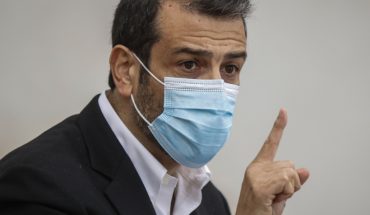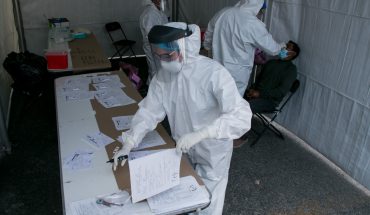Machismo, sexism and the reproduction of gender stereotypes in advertising is common currency. More often than we would like to see in mass media, on public roads or on the internet spots and advertising pieces that, although they want to convince us that yes, do not identify us or speak the same language. But have you ever wondered why, who are the people who make those ads, who moves that industry? or what happens within the companies that produce these content? To answer these questions Filo.News spoke with three women who are part of #MEP (Women in Advertising) and Publicitarias.org, two organizations responsible for conducting a study on the work culture within the advertising industry that measured the advancement of the gender approach within related agencies and companies and set out to know in depth cultural practices in these workspaces. In turn, it was aimed at highlighting the persistence of sexist, misogina, sexist and gender-discriminatory behaviors, to look into how these situations are resolved, and to understand the perspective of people who are part of labor structures.
The results are chilling. To mention some conclusions: 95% of people perceive some level of sexism, machismo and/or discrimination in their companies and in 87% of the reported cases, the person exercising discrimination or violence has a higher hierarchy than the victim. Although the conclusions of the study unfortunately are not new, the raison d’etion of this diagnosis is to put into numbers that violence that is known to exist but no one has size. At the same time, it aims to make the female workforce and diversity visible in the area of advertising. The survey was conducted with the participation of professionals from the advertising industry and related, through an anonymous and confidential online survey between December 2019 and May 2020. The survey was mainly aimed at learning about the work experience of women and LGBTIQ+ people, and was also attended by male colleagues. The violence recorded is multiple. From micromachismos, as men odd to a colleague’s body, women being interrupted when speaking or asked to serve coffee or “take notes” in meetings, to episodes of discrimination, verbal and psychological violence, to situations of extreme violence such as sexual harassment or physical violence.
One of the most worrying results of the study is that 31% claimed to have experienced sexual harassment at some point in their professional career and 3% have experienced physical violence. Yes, the number is low, but it should definitely be zero. The study also indicates that 68% of cases of sexism, discrimination and abuse remain unresolved and that 19% of those affected do not tell anyone. In part, this happens because only 5% of organizations have some protocol, a team, or a specialized person to deal with situations of gender-based violence. So the victims have no one to turn to because in addition, most of the time the violence comes from above: in 9 out of 10 reported cases, who exercises it has a higher position than the victim. That is, they are bosses or superiors who abuse their position of power. If we talk about women in leadership positions the numbers do not improve: although 83% of the companies mapped more than half of the employees are women, only 13% of them hold positions as CEOs or presidencies. In turn, creative general offices, the most representative area of the advertising sector, are practically inaccessible spaces for women since only 17% hold this position. The famous glass ceiling that still persists and strongly in the advertising industry.” Most women were once told that we can’t work in advertising, that we don’t serve for industry, for creativity, or that we’re not going to be able to withstand stress,” She told Filo.News Candela Moscoso, a publicist and social communicator who joined Advertising in 2017. She is one of the first members of the organization.
Advertising is a community that seeks to promote diversity in the industry through activities that encourage participation, female leadership and gender mainsering. Thus, they also intend to inform and educate about the influence that communication has on gender inequalities and the commitment that this entails. Not without us.
#NoSinMujeres was a campaign that emerged as a claim to the limited or almost zero inclusion of women in editorial rankings, pconferences or industry recognitions. The goal was to show that women and dissents are a fundamental part of the industry, that they are there, at the forefront and that there is no new creativity possible without breaking down gender stereotypes. In turn, action was called: if you are going to participate in a space, ask if there are women. That was the slogan.” If you analyze the #NoSinMujeres you see in males that appear as the visible face of the sector patterns of age, social class, ethnicity and hetero cis normative gender: this is THE look. Then one after you may ask yourself, how can we not build the messages that are built if the look is that?”, proposes Paola Ramírez Barahona publicist and researcher of the National Communications Agency (ENACOM) from where she does content analysis, programming and advertising. Undoubtedly the advertising industry remains patriarchal and hyper-masculinized. But for Ariadna, “even though symbolic violence and micromachisms continue to happen much more than we would like, a major change is that industry realized that gender issues and inclusion are relevant and that today it no longer gives the same.” Ariadna Carulli has been working in the advertising industry for more than fifteen years and is the founder of La Dupla & Co, a gender-sensitive market research company that was responsible for systematizing survey data.
Both are part of #MEP a networking and exchange network that was born in early 2019 as a chat group and ended up becoming a professional network that brings together women and LGBTIQ+ people who are part of the advertising sector to promote reflection on the ways in which advertising addresses gender issues, and the impact that advertising as a professional practice has on the reproduction of stereotypes, gender inequalities and symbolic and media violence. Promoting change
Progress is slow, but sure. Ariadna, Paola and Candela are part of the world of advertising and form networks of women who firmly believe that change is made from within. For this, the first step is to make the problem visible and that the industry can recognize in that mirror. To put it in specific numbers: 55% of respondents do not see changes in their companies in relation to gender issues; only 33% believe that all people have the same development opportunities within an agency and only 18% say they perceive that the company’s leadership has a gender approach. It’s missing, and a lot. In turn, all three agree that some of the industry’s faults are due to a lack of listening not only to audiences, but also to people who are part of organizations and raise their hands every time an incorrect message is built. Also lack of training, a fundamental tool to promote change. For Candela it is essential to work in education and in rever processes and structures as a permanent exercise. “Since Advertising always emphasizes that being a woman does not necessarily imply a gender perspective, it is something that is exercised and learned constantly and that is up to all people, beyond gender. It must be something cross-cutting and men must participate in the debate and the process.”
To add more conclusions, 59% of the study considers that there is NO wage equity in the organization where it works and that actions such as extended paternity and maternity leave, gender policies, lactarians or mentoring programs are lacking. While there are several agencies and advertisers that recognize the need for change, who want to make a difference and start doing something different, there are still many structures to change and internal processes that need to be rearmed. Because it is not only important to communicate from inclusion but also to promote and guarantee it within workspaces and in places of formation. For example, #MEP managed to get escuelita de Creativos, one of the leading schools in the sector, to include a compulsory subject of gender training. For its part, Advertising has already trained many companies and important advertising agencies. “You have to approach, set up work tables, chat, make an internal evaluation of each of the agencies, develop protocols steps to follow, actions, review processes. It’s not a laburo overnight, it’s a long process,” Candela said. Now yes, knowing the labor structures of companies and organizations that make advertising, we may be able to approach an answer as to why productions continue to be generated that fall into common places and only reinforce models and stereotypes that do not represent us and exclude us. We need an advertising industry that includes us, not only from the spots but also from the work structures.





